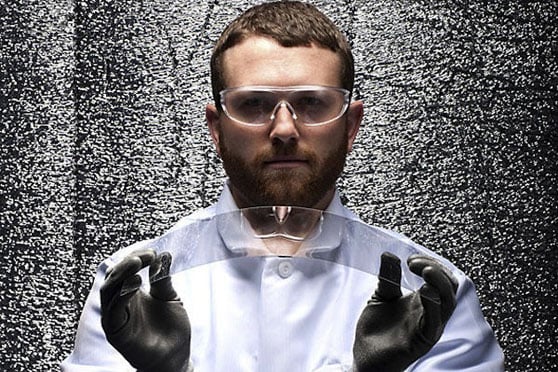Next-Gen Gorilla Glass: Smartphones Could Have Antibacterial, Anti-Glare Displays
It's not too often that upcoming glass technology is worth getting excited over, but leave it to Corning to pique our interest. During a recent talk at MIT's Mobile Technology Summit, Dr. Jeffrey Evenson took to the stage to reiterate what it is about Gorilla Glass that makes it such an attractive product (something well evidenced given the majority of smartphones out there today implement it), as well as to give us a preview of what's coming. As you might be able to surmise, it's worth learning about.

Having pretty much mastered Gorilla Glass where strength, scratch-resistance and general durability are concerned, the company is now looking to improve-upon it (possibly for Gorilla Glass 4) by making it non-reflective and germ-resistant.
In the photo below, it looks as though this sheet of glass has a gaping hole in it. Not so - that "hole" is actually a portion of the glass that has been treated with Corning's anti-reflective material. I'm a little careful with using the word "incredible", but that's the only way I can describe this. Imagine your smartphone sporting this - you'd finally be able to see the screen regardless of how bright the sun behind you is.

The next-gen Gorilla Glass will also boast another important feature though: an antimicrobial coating. It's a little disconcerting to think about, but that phone of yours... it's coated with bacteria. The same goes for virtually any surface, but that doesn't mean we can't get rid of it when we have the option.
In the example below, we can see that when a glass surface uses this coating, it dramatically reduces the amount of bacteria found. The difference is just striking, and it almost makes us wonder why this wasn't tackled long ago.

There's little doubt that given Corning's history with Gorilla Glass, this next iteration is going to be well-worth opting in for, but unfortunately, it appears that it won't be hitting our phones or tablets that soon. The estimate is "in the next two years". Regardless of whenever it gets here, it unfortunately can't get here fast enough.

